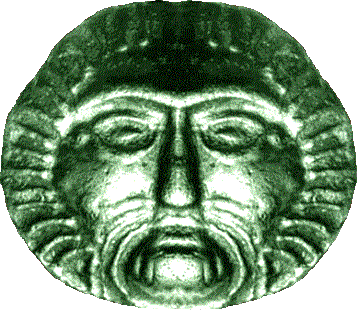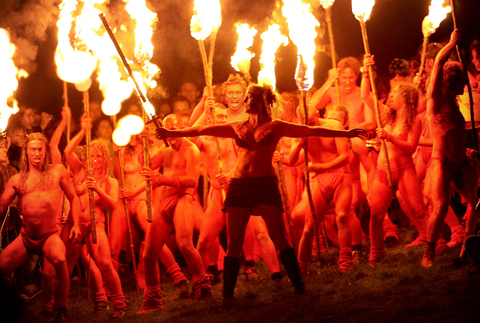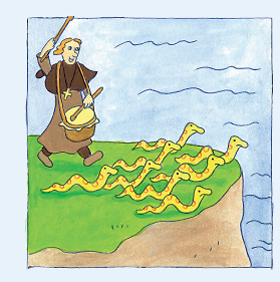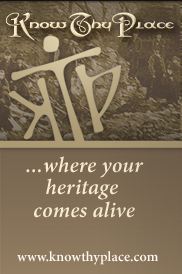If your ancestors hail from Ireland then you most likely think that they spoke Irish or a form of modern English. However, this is not automatically the case. Until well into the 19th century the island retained vestiges of its medieval past; for instance a visitor to Fingal in north Dublin may have heard a local speaking Fingalian, while a traveler in the baronies of Forth & Bargy in Co. Wexford was more likely to hear people speaking ‘Yola’.
Evidence for the longevity of the language can be seen in a report of 1836, when Earl Mulgrave, Lord Lieutenant of Ireland, visited Wexford. Among the addresses he heard was one which began as follows:
To’s Excellencie Constantine Harrie Phipps, y’ Earle Mulgrave,
Lord-Lieutenant General and General Governor of Ireland.
Ye soumissive Spakeen o’ouz Dwelleres o’ Baronie Forthe, Weisforthe
Clearly very different to modern English, this greeting was in Yola. Translated, it reads:
To his Excellency, Constantine Henry Phipps, Earl Mulgrave,
Lord-Lieutenant General and General Governor of Ireland.
The humble Address of the Inhabitants of the Barony of Forth, Wexford.
What were the origins of this seemingly alien language? The answer lies with the original Norman invasion of the country in the 12th century. As the newcomers established a foothold in the south-east of the island, many Saxon and Welsh-Flemish settlers accompanied them, speaking a form of Old English. As the centuries passed the dialect subsumed some Irish words but retained its distinctive character, and remained markedly different from the more modern English that developed.

Baginbun, Co. Wexford. The Normans defeated and Irish force here in 1170, opening the way for the settlement that would lead to the development of Yola.
Fortunately for us, this unique and compelling vocabulary survived long enough to have a glossary of some words recorded in the 18th and 19th centuries, by individuals such as Vallancey and Jacob Poole. In addition we have been left with some fascinating poems and songs, such as the ‘Song of Two Market Women’, or more properly the ‘Zong of Twi Maarkeet Moans’:
ZONG OF TWI MAARKEET MOANS
[SONG OF TWO MARKET WOMEN]
A moan vrim a Bearlough an anoor vrim a Baak,
[A woman from the Bearlough and another from the Beak,]
Thaye zhoult upan oother at high Thurns o Cullpaak,
[They met one another at the high towers of Colepeak,]
Themost wi egges an heimost wi thick,
[One had eggs and another had a kid,]
Fan a truckle ee zhoulthered too nigh upa ditch.
[When the car it moved too near to the ditch.]
Thick besom fighed a spagh wi kick an a blaake,
[The kid angry gave a struggle, with a kick and a bleat,]
An awi gome her egges wi a wheel an car taape,
[And away went her eggs, with the car overset,]
Shu ztaared an shu ztudied hi near parsagh moan,
[She stared and she studied by the other passive woman,]
Shu ztaared, clappu her baashes an up wi punaan,
[She stared, clapped her palms, and up with lament,]
Zien, “a blaak vall, a blaak vall, Ich meigh vella knew,
[Saying “a black fall, a black fall- I might well have known,]
Van a vierd durst a bargher an a haar galshied too,
[When a weasel crossed the road, and a hare gazed at me too,]
In durk Ich red virst mee left-vooted shoe.”
[In the dark I happened first on my left-footed shoe.”]
“Swingale,” co the utmost, “thou liest well a rent,
[“Swindle”, said the other, “you know quite well,]
A big daal a masled, slavaal an a kernt.
[A big lot were rotten, dirty and half-hatched.]
Thou liest valse co secun that thou an ye thick
[You lie false, said the second, that you and your kid,]
Maa bee haghed i more caar an angish than Ich.”
[May be upset in more care and hardship than I.”]
Apparently in the baronies of Forth & Bargy it was deemed ill luck to see a weasel crossing the road, a hare looking over a ditch, or to first put on your left shoe instead of your right. The song gives us an idea of the rich tapestry of culture beyond what we commonly see as ‘traditional’ Ireland. Yola gives us a glimpse into this part of medieval Wexford, through the extraordinary dialect that the locals spoke. So, if you happen to be a descendant of people from this part of Wexford, it may be that yola is the language of your forefathers, rather than Irish or standard English!
References
Browne, K. A. 1927. ‘The Ancient Dialect of the Baronies of Forth and Bargy, County Wexford’ in The Journal of the Royal Society of Antiquaries of Ireland, Vol. 17, No. 2 pp. 127- 137.
Hore E., Dolan W.T.P., & O’Muirithe D., 1979. ‘Congratulatory Address in the Dialect of Forth and Bargy, Presented to Earl Mulgrave, Lord Lieutenant of Ireland, on His Visit to Wexford in 1836’ in The Past: The Organ of the Ui Cinsealaigh Historical Society No. 13, pp. 68-71.





































